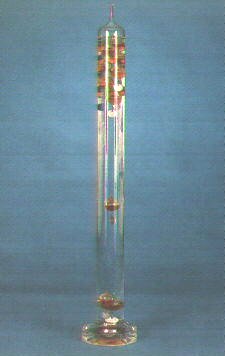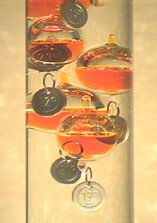The device is constituted by glass cylinder containing a liquid with a density that considerably increases on decreasing of the temperature. Within the cylinder there are some glass cruets with a colored liquid inside. These cruets have different average densities and bring name-plates where one can read the temperature.
Explanation
When the device has reached the thermodynamic equilibrium with the external surroundings, you can read the temperature by observing the number on the lowest cruet floating. If the external surroundings is at a very low temperature, the liquid in the cylinder becomes denser of every cruet, thus all of then float.
On the contrary at high temperature they sink.

|



